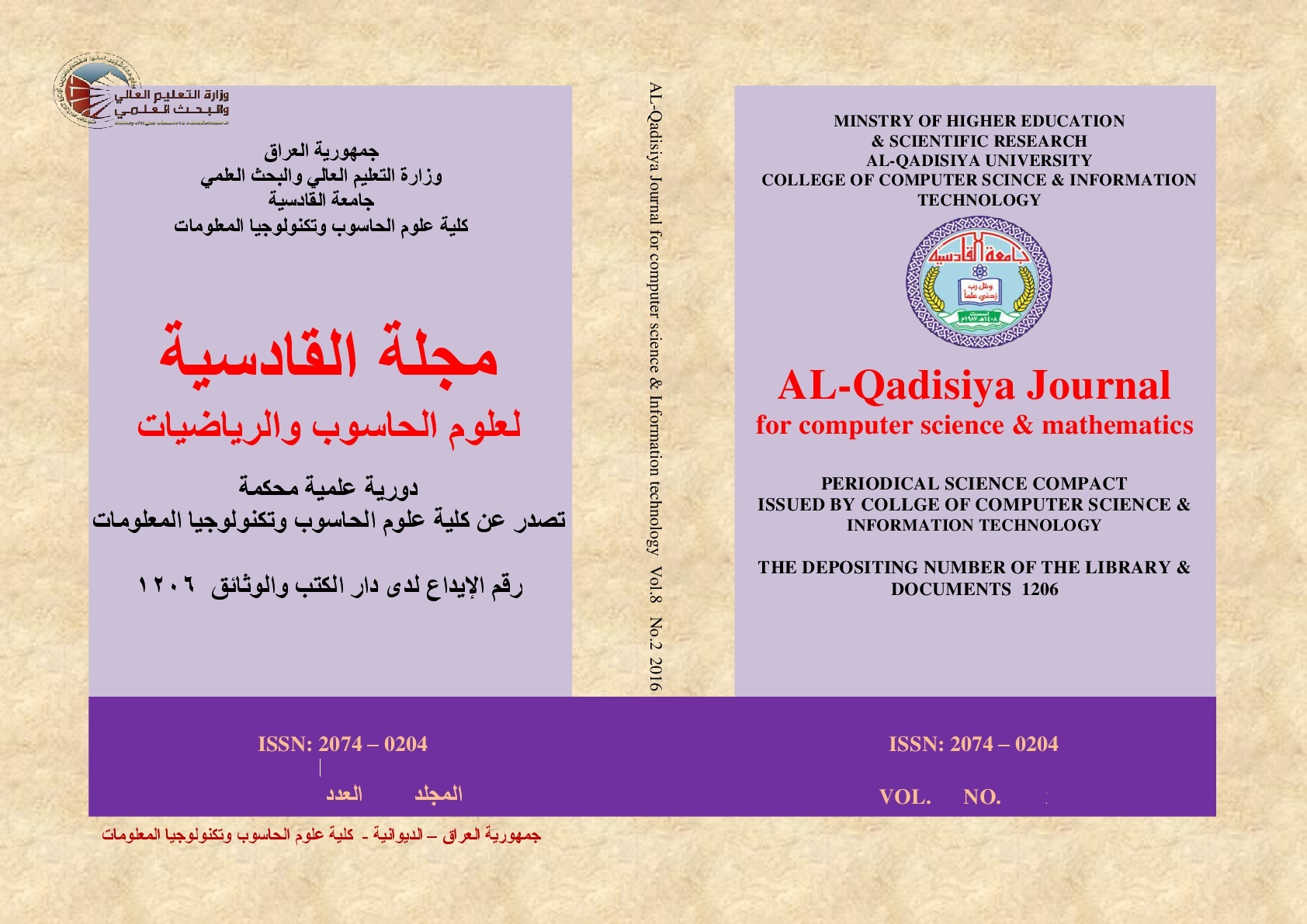Machine Learning Approach for Network Cyber Intrusion Detection
DOI:
https://doi.org/10.29304/jqcsm.2025.17.11966Keywords:
Machine learning, Cybersecurity, Network intrusion detection, KDD’99 cup database GNB classifierAbstract
Nowadays, everyone is interconnected through the Internet for exchanging digital information. This information is stored using cloud technology. However, the rapid growth of cloud technology has led to an accumulation of the volume of digital data, as well as network intrusions. Consequently, protecting this data has become crucial for various reasons. Therefore, this study presented a method for detecting network cyber intrusions. The instances of network cyber intrusions were gathered from the KDD’99 Cup database. Furthermore, the proposed method employed the Gaussian Naïve Bayes (GNB) approach to identify instances of cyberattacks. The proposed method utilized various measurements for the purpose of generally assessing the performance of the GNB classifier. The experimental results have been demonstrated that the proposed GNB classifier has achieved 94.28% accuracy in the detection of network attacks. In addition, the GNB has achieved 98.32% precision, 94.28% sensitivity, and 95.89% F-measure. The proposed GNB algorithm demonstrated its efficiency in detecting network attacks, outperforming its counterparts in terms of detection accuracy.
Downloads
References
M. Albahar, "Cyber attacks and terrorism: A twenty-first century conundrum," Science and engineering ethics, vol. 25, pp. 993-1006, 2019.
I. Lee, "Internet of Things (IoT) cybersecurity: Literature review and IoT cyber risk management," Future internet, vol. 12, no. 9, p. 157, 2020.
P. Lis and J. Mendel, "Cyberattacks on critical infrastructure: An economic perspective," Economics and Business Review, vol. 5, no. 2, pp. 24-47, 2019.
A. Hassan and K. Ahmed, "Cybersecurity's impact on customer experience: an analysis of data breaches and trust erosion," Emerging Trends in Machine Intelligence and Big Data, vol. 15, no. 9, pp. 1-19, 2023.
S. Mohammadi, H. Mirvaziri, M. Ghazizadeh-Ahsaee, and H. Karimipour, "Cyber intrusion detection by combined feature selection algorithm," Journal of information security and applications, vol. 44, pp. 80-88, 2019.
R. W. Anwar, T. Abdullah, and F. Pastore, "Firewall best practices for securing smart healthcare environment: A review," Applied Sciences, vol. 11, no. 19, p. 9183, 2021.
Y. Xin et al., "Machine learning and deep learning methods for cybersecurity," Ieee access, vol. 6, pp. 35365-35381, 2018.
F. T. Al-Dhief et al., "A survey of voice pathology surveillance systems based on internet of things and machine learning algorithms," IEEE Access, vol. 8, pp. 64514-64533, 2020.
M. A. A. Albadr, M. Ayob, S. Tiun, F. T. Al-Dhief, A. Arram, and S. Khalaf, "Breast cancer diagnosis using the fast learning network algorithm," Frontiers in oncology, vol. 13, p. 1150840, 2023.
O. S. Salman, N. M. A. A. Latiff, S. H. S. Arifin, O. H. Salman, and F. T. Al-Dhief, "Internet of medical things based telemedicine framework for remote patients triage and emergency medical services," in 2022 IEEE 6th International Symposium on Telecommunication Technologies (ISTT), 2022: IEEE, pp. 33-37.
M. M. Hasan, S. Khandaker, N. Sulaiman, M. M. Hossain, and A. Islam, "Addressing Imbalanced EEG Data for Improved Microsleep Detection: An ADASYN, FFT and LDA-Based Approach," Diyala Journal of Engineering Sciences, pp. 45-57, 2024.
H. M. Fadhil, Z. O. Dawood, and A. Al Mhdawi, "Enhancing Intrusion Detection Systems Using Metaheuristic Algorithms," Diyala Journal of Engineering Sciences, pp. 15-31, 2024.
M. A. A. Albadr, S. Tiun, M. Ayob, and F. T. Al-Dhief, "Particle swarm optimization-based extreme learning machine for covid-19 detection," Cognitive Computation, pp. 1-16, 2022.
M. A. A. Albadr, S. Tiun, M. Ayob, F. T. Al-Dhief, T.-A. N. Abdali, and A. F. Abbas, "Extreme learning machine for automatic language identification utilizing emotion speech data," in 2021 international conference on electrical, communication, and computer engineering (ICECCE), 2021: IEEE, pp. 1-6.
K. Dhanya, S. Vajipayajula, K. Srinivasan, A. Tibrewal, T. S. Kumar, and T. G. Kumar, "Detection of network attacks using machine learning and deep learning models," Procedia Computer Science, vol. 218, pp. 57-66, 2023.
A. Churcher et al., "An experimental analysis of attack classification using machine learning in IoT networks," Sensors, vol. 21, no. 2, p. 446, 2021.
J. Alsamiri and K. Alsubhi, "Internet of things cyber attacks detection using machine learning," International Journal of Advanced Computer Science and Applications, vol. 10, no. 12, 2019.
P. Varshini, K. Pavithra, and P. Anu, "Analysis of Network Attacks in Cyber Security using Deep Learning," in 2024 International Conference on Intelligent and Innovative Technologies in Computing, Electrical and Electronics (IITCEE), 2024: IEEE, pp. 1-7.
R. Karthiga, P. Kumar, S. Kumari, V. Sureka, and V. S. Pandi, "A Logical Cyber Security Enabled Methodology Design for Identifying Distributed Denial of Service Attacks Using Enhanced Learning Principles," in 2023 International Conference on Sustainable Communication Networks and Application (ICSCNA), 2023: IEEE, pp. 104-109.
S. Rabhi, T. Abbes, and F. Zarai, "IoT routing attacks detection using machine learning algorithms," Wireless Personal Communications, vol. 128, no. 3, pp. 1839-1857, 2023.
B. Sharma, L. Sharma, C. Lal, and S. Roy, "Anomaly based network intrusion detection for IoT attacks using deep learning technique," Computers and Electrical Engineering, vol. 107, p. 108626, 2023.
M. D. T. Bennet, M. P. S. Bennet, and D. Anitha, "Securing Smart City Networks-Intelligent Detection Of DDoS Cyber Attacks," in 2022 5th International Conference on Contemporary Computing and Informatics (IC3I), 2022: IEEE, pp. 1575-1580.
A. Ferriyan, A. H. Thamrin, K. Takeda, and J. Murai, "Generating network intrusion detection dataset based on real and encrypted synthetic attack traffic," Applied Sciences, vol. 11, no. 17, p. 7868, 2021.
I. H. Sarker, A. Kayes, S. Badsha, H. Alqahtani, P. Watters, and A. Ng, "Cybersecurity data science: an overview from machine learning perspective," Journal of Big data, vol. 7, pp. 1-29, 2020.
K. c. 99. [Online] Available: http://kdd.ics.uci.edu/databases/kddcup99/kddcup99.html
A. D. Vibhute, C. H. Patil, A. V. Mane, and K. V. Kale, "Towards detection of network anomalies using machine learning algorithms on the NSL-KDD benchmark datasets," Procedia Computer Science, vol. 233, pp. 960-969, 2024.
J. Gao, "Network intrusion detection method combining CNN and BiLSTM in cloud computing environment," Computational intelligence and neuroscience, vol. 2022, 2022.
A. Abirami, S. Lakshmanaprakash, R. Priya, V. Hirlekar, and B. Dalal, "Proactive Analysis and Detection of Cyber-attacks using Deep Learning Techniques," Indian Journal of Science and Technology, vol. 17, no. 15, pp. 1596-1605, 2024.
C. Yin, Y. Zhu, J. Fei, and X. He, "A deep learning approach for intrusion detection using recurrent neural networks," Ieee Access, vol. 5, pp. 21954-21961, 2017.
G. Andresini, A. Appice, and D. Malerba, "Nearest cluster-based intrusion detection through convolutional neural networks," Knowledge-Based Systems, vol. 216, p. 106798, 2021.
D. Papamartzivanos, F. G. Mármol, and G. Kambourakis, "Introducing deep learning self-adaptive misuse network intrusion detection systems," IEEE access, vol. 7, pp. 13546-13560, 2019.
J Kravets,O Almusawi," Security management of the functioning of a multinode mobile cyber-physical system with a distributed registry based on an automatic model" Journal of Physics: Conference Series vol 2094 , pp 042040 ,2021
Downloads
Published
How to Cite
Issue
Section
License
Copyright (c) 2025 Osamah Adil Raheem

This work is licensed under a Creative Commons Attribution-NonCommercial-NoDerivatives 4.0 International License.













